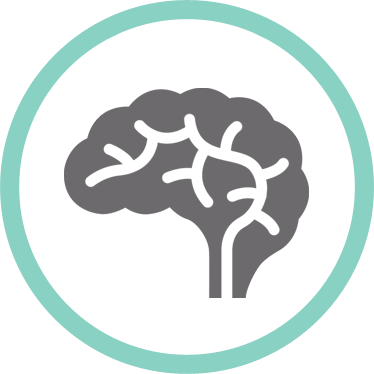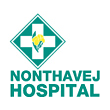Neurology and stroke
- 1. Stroke
- 1.1 Stroke prevention and recovery service
- 1.2 Emergency units, ambulances and medical personnel are well trained to receive patients with stroke fast track system (emergency medical system for stroke service)
- 1.3 Acute stroke unit, neuro IPD and rehabilitation service
- 1.3.1 ICU
- 1.3.2 IPD
- 1.3.3 Rehabilitation and evaluation for placement at discharge
- 1.3.3.1 Physical therapy
- 1.3.3.2 Occupational therapy
- 1.3.3.3 Neuro-rehabilitation
- 1.3.3.4 Rehabilitation for speech disorders from stroke
- 1.3.3.5 Activity therapy for swallowing difficulty caused by stroke
- 1.3.4 Surgeries to reduce stroke risk
- 1.3.4.1 Carotid endarterectomy
- 1.3.4.2 Endovascular angioplasty with stenting
- 1.4 Long term management and prevention of stroke service
- 1.4.1 Losing weight
- 1.4.2 Quitting smoking
- 1.5 Neurodiagnostic services
- 1.5.1 MRI brain
- 1.5.2 MRA brain
- 1.5.3 CT brain
- 1.5.4 Carotid duplex ultrasounds
- 1.5.5 EEG (Electroencehalogram)
- 1.5.6 Laboratory tests
- 2. Memory disorders
- 3. Headache
- 4. Epilepsy
- 5. Movement disorder and Parkinson
- 6. Brain and spine tumor
- 6.1 Brain tumor surgery
- 6.2 Pituitary tumor surgery
- 6.3 Spine tumor surgery
- 7. Brain and spine injury
- 7.1 Brain injuries
- 7.2 Herniated disc surgery
- 7.3 Brain surgery for head injuries
- 7.4 Spondylolisthesis
- 8. Neurosurgery (Stroke)
- 8.1 Cerebral aneurysm surgery
- 8.2 Arteriovenous malformation (AVM) surgery
- 9. Child neurology
Diagnosis and medical technology
![]() Early detection means early treatment. In case the service receiver has risk factors but no symptoms appear, he/she should undergo an initial stroke screening program to address the stroke risk factors as a preventive measure.
Early detection means early treatment. In case the service receiver has risk factors but no symptoms appear, he/she should undergo an initial stroke screening program to address the stroke risk factors as a preventive measure.
![]() Computerized Tomography: CT brain scan is performed to detect brain disorders, such as stroke, brain tumor and head injury.
Computerized Tomography: CT brain scan is performed to detect brain disorders, such as stroke, brain tumor and head injury.
![]() Magnetic Resonance Imaging: MRI brain scan is performed to detect brain disorders, both congenital disorders, such as epilepsy, cerebral arteriovenous malformation, and disorders from aging, such as ischemic stroke, cerebral aneurysm, paralysis, paresis, Alzheimer's disease, and other abnormalities, e.g. infection, tumor, cerebral vasculitis, etc. MRI brain scan is a primary tool to detect brain disorders, since it gives multi-dimensional images of the brain (horizontal slice, frontal-back side, and left-right side). It detects and clearly localizes abnormalities, and therefore helps the physician to quickly and accurately diagnose the cause of an abnormality.
Magnetic Resonance Imaging: MRI brain scan is performed to detect brain disorders, both congenital disorders, such as epilepsy, cerebral arteriovenous malformation, and disorders from aging, such as ischemic stroke, cerebral aneurysm, paralysis, paresis, Alzheimer's disease, and other abnormalities, e.g. infection, tumor, cerebral vasculitis, etc. MRI brain scan is a primary tool to detect brain disorders, since it gives multi-dimensional images of the brain (horizontal slice, frontal-back side, and left-right side). It detects and clearly localizes abnormalities, and therefore helps the physician to quickly and accurately diagnose the cause of an abnormality.

![]() Magnetic Resonance Angiography (MRA): Magnetic field and radio wave are released to examine and create images of arteries of the neck and brain. MRA is a good screening test for brain aneurysm. In addition, it helps the diagnosis of other abnormal brain blood vessels, such as ischemic stroke, brain infraction, hemorrhagic stroke, etc.
Magnetic Resonance Angiography (MRA): Magnetic field and radio wave are released to examine and create images of arteries of the neck and brain. MRA is a good screening test for brain aneurysm. In addition, it helps the diagnosis of other abnormal brain blood vessels, such as ischemic stroke, brain infraction, hemorrhagic stroke, etc.
![]() Carotid Duplex Ultrasonogram (CDU): CDU is examination of carotid arteries which supply blood to the front part of the brain, and vertebral arteries which carry blood to the back part of the brain, with high frequency sound waves. It examines blood flow to the brain and coronary artery calcification or plaque which is a risk factor of paralysis. It helps the diagnosis and monitoring of blood vessel conditions when the patient is still in ICU.
Carotid Duplex Ultrasonogram (CDU): CDU is examination of carotid arteries which supply blood to the front part of the brain, and vertebral arteries which carry blood to the back part of the brain, with high frequency sound waves. It examines blood flow to the brain and coronary artery calcification or plaque which is a risk factor of paralysis. It helps the diagnosis and monitoring of blood vessel conditions when the patient is still in ICU.
![]() Examination of abnormalities of nerve fibers, nerve roots, and muscle, such as numbness of limbs and muscle weakness
Examination of abnormalities of nerve fibers, nerve roots, and muscle, such as numbness of limbs and muscle weakness
 Nerve conduction studies (NCS) for diagnosis of carpal tunnel syndrome.
Nerve conduction studies (NCS) for diagnosis of carpal tunnel syndrome. Electromyography (EMG) for diagnosis of muscular and neurological diseases.
Electromyography (EMG) for diagnosis of muscular and neurological diseases.
![]() Electroencephalography (EEG) is performed as part of diagnosis and treatment planning for epilepsy, syncope, brain conditions, headache, abnormal movement, etc.
Electroencephalography (EEG) is performed as part of diagnosis and treatment planning for epilepsy, syncope, brain conditions, headache, abnormal movement, etc.
Services
Stroke fast track system : A stroke patient must reach a hospital to receive diagnosis and treatment within 3 hours after symptom onset to minimize the risks of paralysis, paresis and death. Nonthavej Hospital provides treatment with physicians and medical teams specializing in medical emergencies, such as hemorrhagic stroke, acute myocardial infarction, etc. Our stroke fast track system effectively reduces the risk of paralysis, paresis and death.
Transfer to physicians specializing in neurological diseases, such as cardiologists, orthopedists, endocrinologists, neurological surgeons, etc., for effective treatment.
Physical Clinic : We arrange individual exercise programs for each neurological patient, for example balance training exercise, walking with supporting tools, neck traction, use of supporters, under the assessment of physical medicine and rehabilitation physicians and physical therapists with license for professional practice, and assistants certified by the Ministry of Public Health. Patients will be trained to regain control of their body.
Stroke
Thrombotic stroke / hemorrhagic stroke or paralysis/paresis result from abnormal blood vessels in the brain, which may be narrowed, clogged, or ruptured. Due to inadequate blood supply, the brain cannot function normally, and neurological symptoms appear. The severity depends on the size and location of brain tissues which lack adequate blood supply, as well as the period of time from symptom onset to treatment access. With timely and accurate treatment, patients will be able to recover quickly, and their symptoms greatly relieved.
Stroke can be categorized into 2 types;
![]() Ischemic stroke: 80-85% of stroke cases result from atherosclerosis caused by many risk factors, such as hypertension, dyslipidemia, aging, smoking, etc. These factors lead to clogged or narrowed blood vessels, which obstruct blood flow to brain tissues.
Ischemic stroke: 80-85% of stroke cases result from atherosclerosis caused by many risk factors, such as hypertension, dyslipidemia, aging, smoking, etc. These factors lead to clogged or narrowed blood vessels, which obstruct blood flow to brain tissues.
![]() Hemorrhagic stroke: 10-15% of stroke cases result from hypertension caused by blood vessels that are not flexible and later rupture. If the blood spill covers a large area or occurs at an important location, like the brainstem, it may cost the patient’s life in a very short period.
Hemorrhagic stroke: 10-15% of stroke cases result from hypertension caused by blood vessels that are not flexible and later rupture. If the blood spill covers a large area or occurs at an important location, like the brainstem, it may cost the patient’s life in a very short period.
Stroke risk factors
- Hypertension deteriorates blood vessels. High blood pressure quickly damages the blood vessel layers and ruins their flexibility. Consequently, the blood vessels become narrow and easily ruptured.
- Diabetes (meaning the fasting blood sugar level reaching 126 mg/dL or higher) increases the risk of ischemic stroke.
- Dyslipidemia: Too much lipid accumulation in the blood vessels causes blockage in the arteries and reduces blood supply to organs. If brain blood vessels are blocked, it will lead to ischemic stroke and paralysis.
- Heart disease, e.g. cardiovascular disease, heart valve disease, arrhythmia, etc.
- Smoking and alcohol drinking
- Obesity: Excess body weight significantly increases risk of diabetes or hypertension, or both. (Waist size should not be greater than 35 inches for women or greater than 39 inches for men.)
- Aging is associated with deteriorated blood vessels.
- Lack of exercise
- Stress
*According to medical statistics, 30% of stroke cases result from arrhythmia and cardiovascular disease. Without timely treatment, the death rate reaches over 13%.
Stroke prevention
- Annual health checkup to address risk factors.
- If stroke risk factors are found, the patient must receive treatment and regularly take the medication according to the treatment plan. The patient should not stop medication intake by him/herself, and immediately seek medical attention if abnormalities appear.
- Control of blood pressure, blood lipids, and blood sugar within normal range.
- Avoid sweet, salty or high-fat foods.
- Regularly exercising. At least 3 times/week, 30 minutes each time. Control weight within healthy weight range.
- Refrain from smoking and drinking alcohol.
- In case of warning symptom, even if symptom disappears on its own, the patient should promptly see a physician to prevent reoccurrence.





